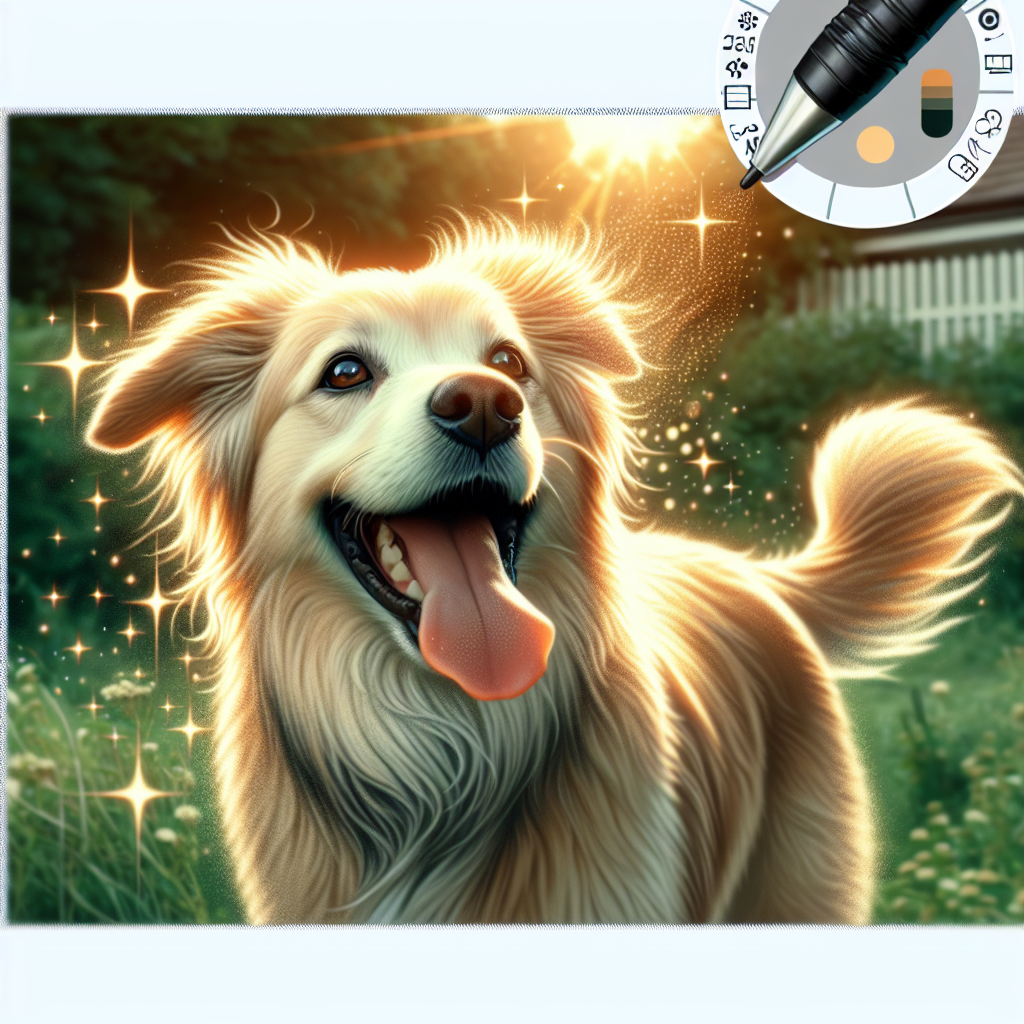Flea Anemia: A Hidden Threat to Kittens

Alright, folks, let’s talk about something that’s got the potential to turn your world upside down if you’re a cat lover. We’re diving into the world of flea anemia in kittens. Now, you might be thinking, “How bad can it be?” Well, let me tell you—it’s like finding out your favorite pizza joint is closed on the weekend. It’s a real bummer. Flea anemia, in its sneaky little way, can hit kittens hard.
Imagine this: your little furball’s bright eyes and playful antics start fading. You think it’s just a phase or maybe she’s tired from chasing the red dot all day. But lurking beneath that fluff could be the danger of flea anemia. These tiny pests—fleas, that is—don’t just cause a little itch. They can drain your kitten’s blood like that one uncle who always finishes your beer at the family barbecue.
Flea anemia in kittens is no joke. When fleas feast, they take more than just a sip. They can lead to anemia, leaving your kitten weak and listless. You notice your kitten isn’t her usual spry self, and you start to worry. It’s time to take action. Understanding this threat is step one, and trust me, it’s a step you don’t want to skip.
Understanding Flea Anemia in Cats
Let’s break it down. Flea anemia in cats happens when these pesky fleas decide your kitten is their personal buffet. It’s not just fleas being annoying—it’s them being downright dangerous. These critters are more than a nuisance, and they can wreak havoc on your kitten’s health.
Fleas are like that one guest who overstays their welcome. They settle in, get comfy, and start taking advantage of the hospitality. Your kitten’s blood becomes their cocktail. Over time, this blood loss can lead to anemia. And let me tell you, anemia in cats is no walk in the park. It can lead to a slew of health issues that you’d rather avoid.
But hey, don’t panic just yet. Understanding flea anemia is the first step in preventing it. Keep an eye out, and be ready to swoop in like a superhero when needed. Knowledge is power, my friends. The better you understand the flea life cycle and kittens, the better equipped you are to tackle this menace head-on.
Signs Your Kitten Might Be Anemic
Now, let’s get into the nitty-gritty. How do you know if your kitten is anemic? Look, we’re not all vets here, but there are signs of anemia in cats that even a rookie can spot. Your kitten might seem more tired than usual. Not just the “I played hard all day” tired, but the “I can’t even be bothered to look at that string” tired.
You might notice her gums looking pale, like she saw a ghost. That’s another sign your kitten might be in trouble. And if she starts losing weight, it’s time to raise the alarm bells. These signs are your kitten’s way of telling you something’s up.
Don’t ignore these cries for help. It might be time for a trip to the vet, and yes, I know that can be as fun as a root canal. But catching flea anemia early can save you a lot of heartache—and vet bills—down the road.
Why Fleas Are More Than Just a Nuisance
Let’s face it, fleas are the worst. They’re like the mosquitoes of the pet world. But it’s not just about the itch. Fleas are more than just a nuisance—these little bloodsuckers are a health hazard. Not only do they cause flea infestation dangers, but they also bring a whole host of problems with them.
Your kitten is practically a walking buffet for these guys, and if you’re not careful, it can lead to some serious issues. Fleas can carry diseases, and their bites can cause allergic reactions. It’s like opening Pandora’s box, and not in a fun way.
So, what’s a cat owner to do? Well, understanding the health risks of fleas in kittens is a start. These critters might be small, but they pack a punch. Don’t let them take over your home and your kitten’s health. Stay vigilant and keep your furry friend safe from these pesky invaders.
The Life Cycle of Fleas and How It Affects Your Kitten
Alright, folks, buckle up because we’re diving into the life cycle of fleas and how it affects your kitten. It’s like a horror movie, but with more scratching. Fleas have a sneaky way of getting around, and once they’re in, they’re hard to evict.
These critters start as eggs, laid in your kitten’s fur or around your home. They hatch into larvae and eventually transform into pupae. It’s like a twisted version of The Metamorphosis by Kafka, but with fleas instead of Gregor Samsa.
Before you know it, your kitten is under siege. The fleas are multiplying faster than rabbits, and your kitten becomes their favorite meal. It’s a vicious cycle that can leave your kitten weak and anemic if you don’t step in.
But hey, don’t throw in the towel just yet. Treating flea anemia in cats is possible. It’s all about breaking the flea life cycle and kittens come out on top when you do. So roll up your sleeves, and let’s get to work. Your kitten’s health is worth the fight, and you’ll be glad you took the time to protect your little furball.
Thanks for sticking with me through this flea-infested journey. You’ve got this, and your kitten’s got you.
Spotting the Signs: When Fleas Take Over
Ah, kittens and fleas—what a combo. One minute your little furball is bouncing around, the next, it’s scratching like mad. That’s when you know you’ve got a flea problem. But don’t sweat it. How do you spot the signs of flea anemia in kittens? Well, it’s not rocket science. If Fluffy looks like she’s walking a tightrope, weak and wobbly, that’s a big red flag. Fleas are sneaky little critters. They love to hide in the fluff and fur, making their presence known only after they’ve set up camp. Keep an eye out for pale gums and lethargy. These are the tell-tale signs that your kitten is not just hosting a flea party—she’s dealing with flea anemia. Time to roll up those sleeves and get down to business.
Immediate Actions: What to Do Right Away
So, you’ve spotted the signs. Now what? Panic? Nah, not on our watch. It’s time for immediate action—swift and sure. First steps when kittens have fleas are crucial. Start with emergency flea treatment for kittens. No need for fancy potions—grab a flea comb and get to work. Get your hands dirty, because those fleas won’t wait for a formal invite to leave. Work through the fur, part by part, and evict those little pests. Remember, this is a battle, and you’re in charge. Don’t forget to clean Fluffy’s bedding and your home too. Fleas are like bad guests—they leave a mess behind.
Vet Visits: Making the Most of Your Trip
Alright, time to call in the big guns—the vet. Ah, the vet visit—a necessary evil. You love them, you hate them, but you can’t live without them. Vet recommendations for kitten flea anemia are invaluable. When you get there, pepper them with questions. Take notes like it’s an exam. “What should I do next, Doc?” “How do I prevent this from happening again?” You wouldn’t want to miss out on the good stuff, right? The vet might suggest some medication or a follow-up care plan for flea-infested kittens. Whatever they say, listen up. They’re the experts, after all. Keep those ears open and your notebook handy.
Home Care: Nursing Your Kitten Back to Health
Now, back home, it’s time for some TLC. Nursing your kitten back to health isn’t a quick fix. It takes time and patience. A warm towel, some gentle strokes, and a lot of love—magic in the making. This is where you can try some home remedies for flea anemia in kittens. Maybe a gentle bath with mild soap, or a natural flea repellent. Don’t rush it. Take it slow. Let Fluffy recover at her own pace. And keep an eye on her condition. If she’s not bouncing back, call the vet. They might have more advice up their sleeve. Hang in there, you’re doing great.
Preventing Future Flea Infestations
You’ve been through the wringer, but you’re wiser for it. Now, it’s time to think ahead—preventing future flea infestations. Because once is enough, thank you very much. Keep those fleas at bay with some simple tricks. You can try preventing fleas on kittens naturally. Maybe it’s a herbal solution, or keeping the house clean and tidy. Regular grooming can help too. Stay vigilant, because fleas are opportunists. They’re always looking for a way in. But you’re prepared now. You’ve got the knowledge, the experience, and the grit to keep them out. Fluffy will thank you with a lifetime of cuddles. Keep up the good work, you’re a great pet parent.
Monitoring Your Kitten’s Recovery
Alright, folks, so you’ve got a kitten with flea anemia, huh? That’s a doozy, but you’re not alone. I’ve been around the block a few times, and trust me, it’s a ride. Now, let’s talk about keeping an eye on your kitten’s recovery. Picture this: your kitten’s health is like a soap opera—one minute they’re bouncing around, the next they’re down for the count. That’s why you gotta keep tabs on ’em—like you’re watching a toddler who’s just discovered crayons and walls.
Check those gums. Seriously, it’s as simple as that. They should be pink, not pale. If those gums are looking a little ghostly, it’s time to take action. And how’s that energy? Your little furball should be climbing the curtains like they’re training for the kitty Olympics. If not, well, something’s up.
Now, don’t forget about the importance of monitoring kitten health post anemia. It’s not just a fancy phrase—it’s your lifeline. This isn’t just about watching them; it’s about understanding their new normal. It might feel like juggling spaghetti blindfolded, but you’ll get the hang of it. Just remember, you’re the hero in their eyes.
Home Remedies and Alternative Treatments
Okay, let’s dig into the bag of tricks—home remedies and alternative treatments. I know, I know, it sounds like something out of a fairy tale. But bear with me. Think of these as your grandma’s chicken soup for kittens. Natural? Yes. Magic cure? Nah, not quite.
You’ve got folks out there dousing their kittens in essential oils, like they’re preparing them for a fancy spa day. Others are trying out natural flea collars. But, hey, use your noggin’. Do your research before diving headfirst into the world of home remedies for kitten flea anemia. You don’t want to end up with a kitten that smells like a lavender field gone wrong.
And here’s the kicker—alternative treatments for feline anemia. It’s not all about oils and collars. Sometimes it’s about diet, supplements, and a little bit of luck. But, again, tread carefully. This isn’t a free-for-all, folks.
When to Consult a Vet Again
Now, let’s talk about the big guns—when to consult a vet again. You know your kitten better than anyone, right? If they’re acting off, like skipping meals or snoozing the day away, it’s time to holler at the doc. Don’t wait until it’s too late.
Follow-up vet visits for kittens are crucial, my friend. It’s like checking the oil in your car—ignore it, and you’re in for a world of trouble. A quick check can save you a heap of worry. And who wants to worry? Not me, and definitely not you.
So, if your kitten’s acting like a drama queen, don’t hesitate. Dial up the vet. It’s better to be safe than sorry.
Long-term Prevention Strategies
Ah, long-term prevention strategies. Sounds boring, right? But stick with me here. Flea prevention tips for kittens are your best pals. Fleas don’t take vacations, and neither should your vigilance.
Regular checks are a must. It’s like brushing your teeth—do it often, or face the consequences. Flea collars, spot-on treatments, and a good old-fashioned comb are your new best friends. You’ll thank me later.
And here’s the deal—prevention is cheaper than cure. You don’t want to be shelling out cash for vet visits every other week. So, nip it in the bud before it becomes a full-blown crisis.
Sharing Your Experience and Support Networks
Last but not least, let’s talk about sharing your experience and support networks. Don’t underestimate the power of swapping stories at the park or joining an online group. It’s like therapy, but for pet owners.
Sharing kitten care stories can be a lifeline. You’re not alone in this kitty adventure. There are folks out there who’ve been through the wringer and come out the other side. Lean on them. Learn from them.
Support groups for pet owners aren’t just about venting—though that’s a big part of it. It’s about finding strength in numbers. We’re all in this together, folks.
And hey, hats off to you for sticking through this journey with your kitten. You’re not just a pet owner—you’re a hero in your kitten’s eyes. Keep at it, and know that every step you take is a step towards a healthier, happier furball. Thanks for sticking with us, and here’s to a flea-free future!
Quick Takeaways:
Oh, the joys of kittens and their flea drama. You spot your kitten scratching, and suddenly, you’re knee-deep in a flea-fueled saga. Let’s cut to the chase: flea anemia in kittens isn’t something to brush off. When fleas take over, they feast on your furry friend, leaving them weak and wobbly—signs of anemia in cats are no joke. You might find your kitten looking extra pale, especially around the gums. That’s your cue—time to act.
First things first—get on that emergency flea treatment. It’s a roll-up-your-sleeves kind of job. A good flea comb is your best friend, and it’s time to get up close and personal with those pesky critters. But that’s not all. You’ll need to hit the vet. Yeah, it’s like going to the dentist, but for your kitten. The vet will have the lowdown on treating flea anemia in cats. They’ll guide you on the right meds and tell you what to watch for as your kitten bounces back.
Now, let’s talk prevention. Flea prevention tips for kittens are like gold. Regular checks, flea collars, and a clean environment—these are your go-to strategies. Keep an eye on your kitten’s health post-anemia, ensuring they’re eating well and full of energy.
And hey, don’t shy away from sharing your flea saga—other pet owners have been there, done that. Your story might just help someone else in the trenches of a flea infestation. So, hang in there—you’re doing a fine job, and your kitten is lucky to have you.
FAQs:
1.
What are the signs of flea anemia in kittens?
Flea anemia in kittens often shows up as pale gums, lethargy, and weakness. You might notice your kitten acting like it’s just plain tired all the time or struggling to keep up with its usual antics. Keep an eye out for excessive scratching, too. That’s a sure sign that fleas are making themselves at home.
2.
What is the best emergency flea treatment for kittens?
In a pinch, a flea comb is your best weapon. It’s the low-tech, no-fuss way to start evicting those fleas. There are also vet-approved topical treatments you can use, but make sure they’re specifically for kittens. Your vet can guide you on the safest options tailored to your kitten’s needs.
3.
What are the vet recommendations for treating flea anemia in kittens?
Your vet will likely suggest a combination of flea treatment and supportive care for anemia. This could mean iron supplements or a special diet to help your kitten recover. They might also recommend a follow-up visit to ensure your kitten’s back in tip-top shape. It’s all about getting that energy and health back on track.
4.
Can I use home remedies for treating flea anemia in cats?
While home remedies can help manage fleas, they aren’t a cure-all. You might hear about vinegar baths or essential oils, but these aren’t always safe for kittens. Always run any home remedy by your vet first. They’ll help you avoid any well-meaning but potentially harmful mistakes.
5.
How can I prevent fleas on my kitten naturally?
Prevention is key. Regular grooming with a flea comb can catch problems early. Keeping your home clean and vacuuming often helps, too. There are natural flea collars and herbal sprays, but again—check with your vet. They’ll help you find safe, effective options to keep those fleas at bay.
Conclusion:
Navigating the rough waters of kitten flea anemia treatment isn’t for the faint-hearted. But you’re here, and that’s a big part of the battle won. With your trusty flea comb and a bit of grit, you’ve faced those tiny invaders head-on. Your vet is your ally, sharing the wisdom of the ages—or at least the latest in flea-fighting strategies.
Now, it’s all about the follow-through. Keep an eye on your kitten’s health post-anemia. Monitor their energy and those all-important pink gums. Stay vigilant with your flea prevention tips, because, let’s face it, fleas never take a day off.
Remember, every scratch and every purr is a step towards a healthier, happier furball. This flea saga might not be the highlight of pet ownership, but it’s a learning curve. And hey, sharing your story might just help someone else avoid the same pitfalls.
So, kudos to you for sticking it out. Your kitten’s lucky to have you, and together, you’ll tackle whatever comes next. Keep up the good fight, and here’s to a future filled with purrs and free of fleas. You’re doing great—pat yourself on the back, and give that kitten an extra cuddle for good measure.
References:
1. https://www.vet.cornell.edu/departments-centers-and-institutes/cornell-feline-health-center/health-information/feline-health-topics/anemia
2. https://veterinarypartner.vin.com/default.aspx?pid=19239&id=4951428
3. https://kittencoalition.org/critical-care-for-kittens-flea-anemia-part-4-of-4/
4. https://yourpetandyou.elanco.com/us/health-and-care/anemia-in-cats
5. https://coastalveterinarycare.vet/flea-anemia-in-cats/
Our solution eradicates fleas on contact without harmful chemicals, ensuring a safe environment for your pets and family. Easy to use and highly effective, SayByeBugs helps you maintain a flea-free home. Learn more and order today at SayByeBugs.com
Our solution eradicates fleas on contact without harmful chemicals, ensuring a safe environment for your pets and family. Easy to use and highly effective, SayByeBugs helps you maintain a flea-free home. Learn more and order today at SayByeBugs.com








